Non-Toxic Sleep At Last: Best Organic Crib Mattresses (2021)
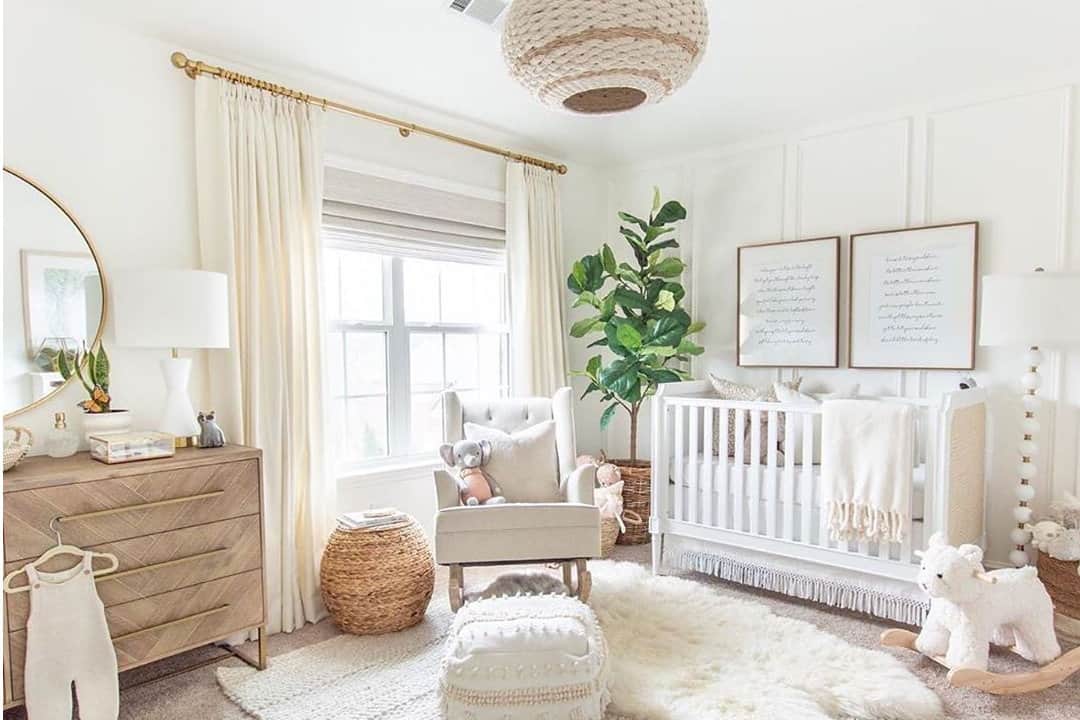
Having a good organic crib mattress is one of the easiest wins when it comes to creating a more non-toxic home.
You might be shocked at how many awful chemicals can be found in a mattress. From hormone-disrupting phthalates to toxic fumes to flame-retardant chemicals, there’s a lot of nasty stuff that might be lurking in your mattress.
Since babies spend 12-15+ hours per day on their mattress, it’s so crucial that they have a safe, non-toxic bed.
Having looked at other online guides discussing the “best organic crib mattresses”, we were appalled at some of the recommendations that are being given. On more than one popular list we found, many of the recommendations weren’t even organic, let alone safe!
Not only that, but there’s a lot of tricky misleading marketing amongst “organic” crib mattress manufacturers.
So, let’s take a dive into the world of crib mattresses, why they can be dangerous, and which mattresses you can trust.
(For info on adult mattresses, see our non-toxic mattress guide.)
Today we’ll be answering questions like:
- Why conventional mattresses are dangerous.
- How companies are tricking consumers.
- What the various certifications mean.
- Which crib mattresses brands you can trust.
The Best Organic Crib Mattresses Brands
Below we’ve compiled a list of trustworthy, non-toxic and organic crib mattresses that fit all of the above criteria.
You can put your trust in any of the products listed below. And while it’s not cheap to buy an organic crib mattress (the cheapest option we have is $259) it’s well worth it to avoid the awful, nasty chemicals that can be found in traditional mattresses.
We understand that not everyone can afford to shell out $259 for a crib mattress that they’re not going to use for very long, but if you’re trying to shop non-toxic for your little one, the mattress is a good priority.
A Few Quick Notes
Weight: The weight of the mattress matters. Changing crib sheets or flipping the mattress can be a huge pain with a heavy mattress. The lightest mattress on our list is 10 lbs, while the heaviest is over 40 lbs. Think about if weight is important to you.
Returns: Most of the brands we looked at offered free returns. However, some do not, and we don’t recommend these brands for that reason alone. If you’re unhappy with the mattress you’re stuck with it.
So, without further adieu, here’s the list:
| Mattress | Price | Weight | Materials | Waterproof? | Dual-Firmness? | Returns |
| Naturepedic Classic / Lightweight | $259.00 | 10 lbs | Latex | Y | N | 30 days |
| Naturepedic Classic / Lightweight / 2-Stage | $289.00 | 11 lbs | Latex | Y | Y | 30 days |
| Naturepedic Classic / Innerspring 150 Coil / 2-Stage | $299.00 | 19 lbs | Innerspring | Y | Y | 30 days |
| Naturepedic Breathable / Lightweight / 2-Stage | $349.00 | 14 lbs | Latex | Y | Y | 30 days |
| Naturepedic Breathable / Innerspring 252 Coil / 2-Stage | $379.00 | 19 lbs | Innerspring | Y | Y | 30 days |
| Avocado Luxury Mattress | $1,249.00 | 36 lbs | Latex | N | Y | 100 days |
| Avocado Regular Mattress | $279.00 | 28 lbs | Innerspring | N | Y | 30 days |
| Emily Crib Mattress / Innerspring 150 Coil | $259.00 | 16 lbs | Innerspring | N | N | 100 days |
| $399.00 | ? | Latex | N | N | NO | |
| $799.00 | 41 lbs | Latex | N | N | NO | |
| $799.00 | 38 lbs | Innerspring | N | N | NO |
Naturepedic

Price: $259 to $399
(Use Code BETTERGOODS15 for 15% off and free shipping!) (Visit the site)
Naturepedic is a great company that makes USA-made, safe organic crib mattresses and comes highly recommended by Better Goods.
Their mattresses are Global Organic Textile Standard (GOTS) and MADE SAFE certified and have no flame retardants, vinyl/PVC, polyurethane foam, phthalates, latex, antibacterial treatments, glues or adhesives, GMO fibers or insulator pads.
They’re also certified by GREENGUARD Gold and formaldehyde free.
Naturepedic makes a bunch of different mattresses and here’s how they stack up:
Innerspring line: These come in 150-coil and 252-coil options, regular and dual-firmness (which makes it suitable for toddlers) and seamless and non-seamless (seamless makes it completely waterproof) versions. These use an organic cotton fill.
Lightweight line: These use a food-grade polyethylene foam core fill, which really isn’t as good as the organic cotton fill the innerspring versions have. If having a light mattress is what’s important to you, these are way lighter. These are about 2 pounds, while the innerspring line comes in at about 18 pounds.
Breathable line: Breathable mattress are supposed to be more comfortable for baby, because they allow air flow. They’re also supposed to be safer, because baby can theoretically breathe through the mattress material if she were to flip onto her face.
Ultra line: The ultra is the most expensive model that has it all: lightweight, breathable, dual-firmness, and the softer toddler side is quilted to make it more comfortable for a bigger child. Please be aware that the quilted side is not waterproof, so topping it off with their organic cotton waterproof mattress protector would probably be a good idea.
While many breathable crib mattresses on the market have a variety of issues including the use of flame retardant chemicals, polyurethane foam, etc. Naturepedic does make the safest choice out there if you do want a breathable crib mattress, though.
All Naturepedic mattresses have a waterproof covering made from polyethylene sourced from non-GMO sugarcane. They also have an optional 2-stage design, where one side of the mattress is firmer than the other, making it suitable for a toddler.
Some bad reviews?
Naturepedic mattress tend to have some bad reviews online from parents who say that the mattress started to sag in the middle. Now, most of these reports are at least a few years old and supposedly they’ve fixed the issue. They will replace the mattress free-of-charge if you end up having any kind of issue with sag.
Emily Mattress by My Green Mattress
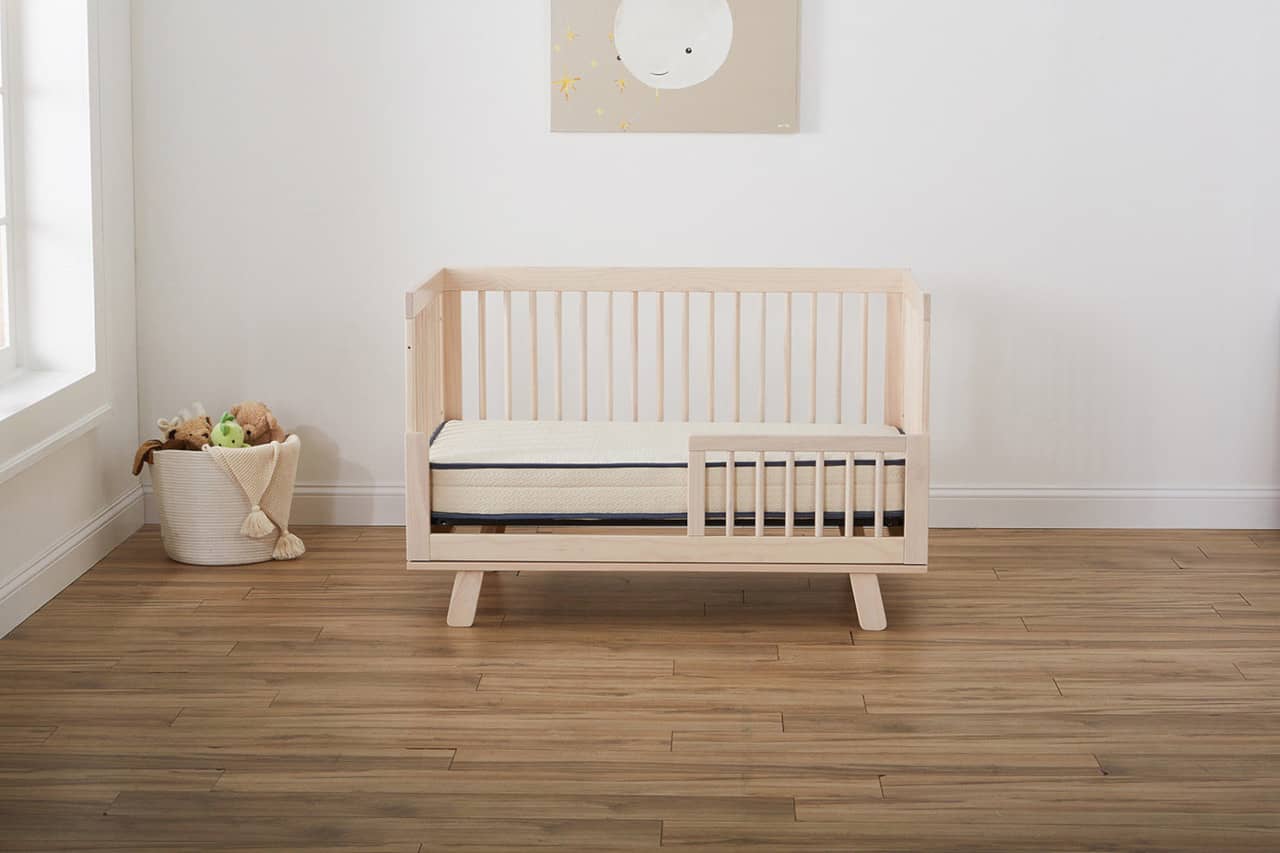
Price: $274 + waterproof mattress protector for $60 (Visit the site) (Use code BETTERGOODS for $20 off!)
The Emily crib mattress is another great option. Also made in the USA, it’s made of all GOTS-certified organic materials: wool, cotton and coconut coir. It comes in only one option: 150-coil innerspring model.
The core of the mattress is made of organic wool. Not only is wool a great natural material but it’s also naturally flame resistant, eliminating the need for toxic chemical flame retardants.
The outer layer of the mattress if made from organic cotton. They use an organic coconut coir comfort layer, which is blending with GOLS-certified organic latex, which is supposed to create a firm but pressure-relieving surface for your baby.
Please be aware that this is not a waterproof mattress. Therefore, it’s crucial that you use a waterproof mattress protector. They, of course, make one, but it will set you back another $60 on top of what’s already a rather expensive mattress.
The makers of the Emily Mattress offer a 120-day trial and free shipping and returns, so it’s really risk free. If you don’t like it in the first few months you can return it, no questions asked. This only applies if you buy it straight from their website
Because of the potential sagging issues with the Naturepedic models, this is probably the safer bet as of right now.
Avocado
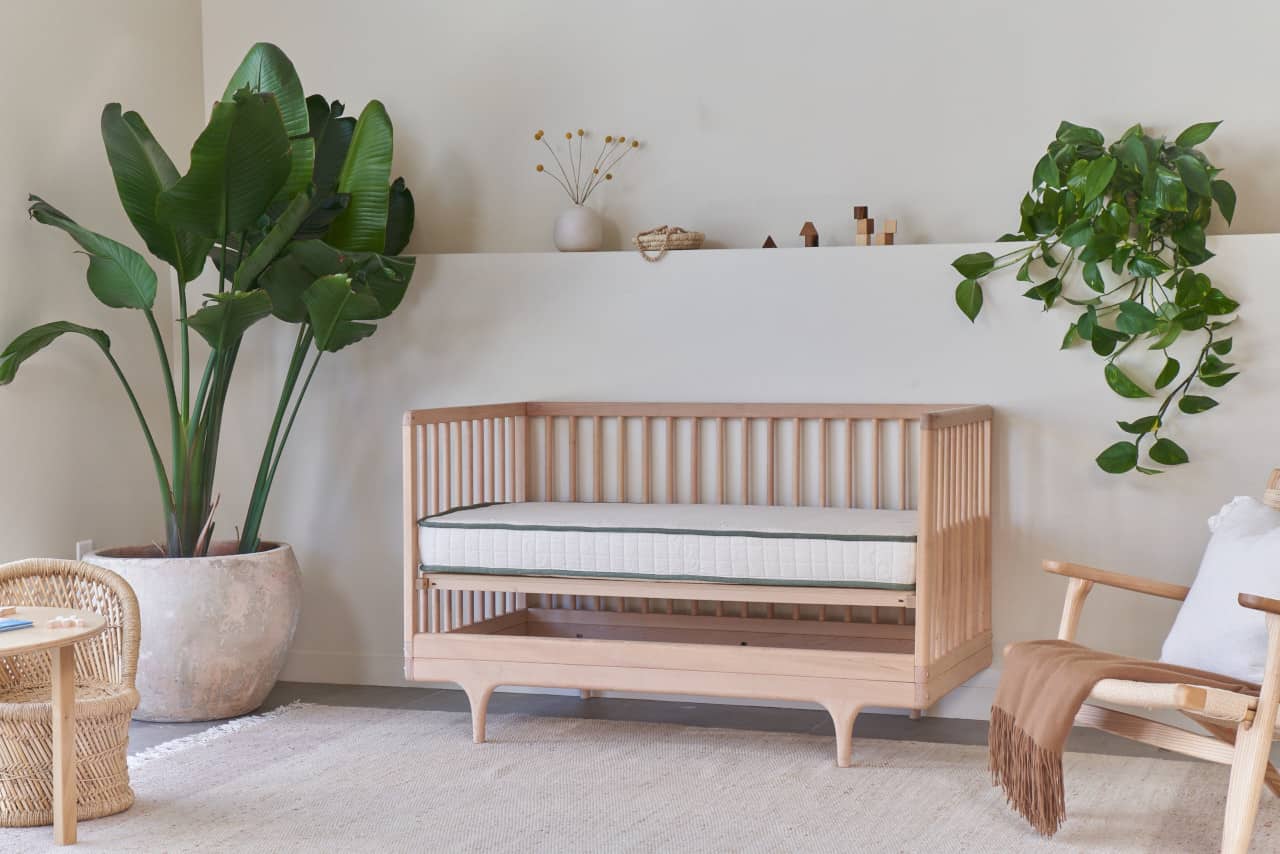
Price: Luxury $1249 (visit the site) / Regular $279 (visit the site)
Let’s get one thing out of the way: the luxury mattress is expensive. I’m not even sure why it’s so expensive. They sell a queen size mattress that’s almost the same price as this one and they do call it a “luxury” mattress, but $1249 is extremely expensive for a crib mattress.
Avacado is a big name in adult mattresses and they decided to get into the baby crib mattress market with this offering. They’re handmade in California and are GreenGuard GOLD, GOTS organic & GOLS organic certified.
This mattress isn’t waterproof and requires a mattress pad. It’s a 170-coil innerspring mattress, similar to the low-end Naturepedic models which cost 1/3 of the price. They offer a 100-night trial and a 25-year warranty, which is pretty solid.
It’s a dual-sided mattress with one side being more suitable for a toddler, which is a bonus. The toddler side is coated in coconut coir (combined with latex).
This is also a very heavy mattress. At a weight of 36 lbs, it’s not easy to change the sheets or flip.
I’m sure it’s a good mattress, but I’d be hard pressed to recommend it at this price. If luxury is what you’re on the market for, this might be an option, but for most people, it’s just way too expensive.
Recommended: No
The Regular Avocado Mattress
The non-luxury avocado mattress makes more sense. This model is made from organic cotton, wool, and latex as opposed to being an innerspring like the premium model.
Like most of the other mattresses here, it requires a waterproof mattress protector which will cost you another $60 if you go with their model.
It’s made from 100% GOLS-certified organic latex and 100% GOTS-certified organic wool and cotton. Much like the premium version, this is also double-sided, so it can be converted to a toddler mattress when they outgrow the crib.
If I were going to choose an Avocado mattress, I’d go with this model over the premium version. For around 1/5 of the price, it just doesn’t make sense to buy the premium model unless you really want to splurge.
Recommended: Yes
Lifekind
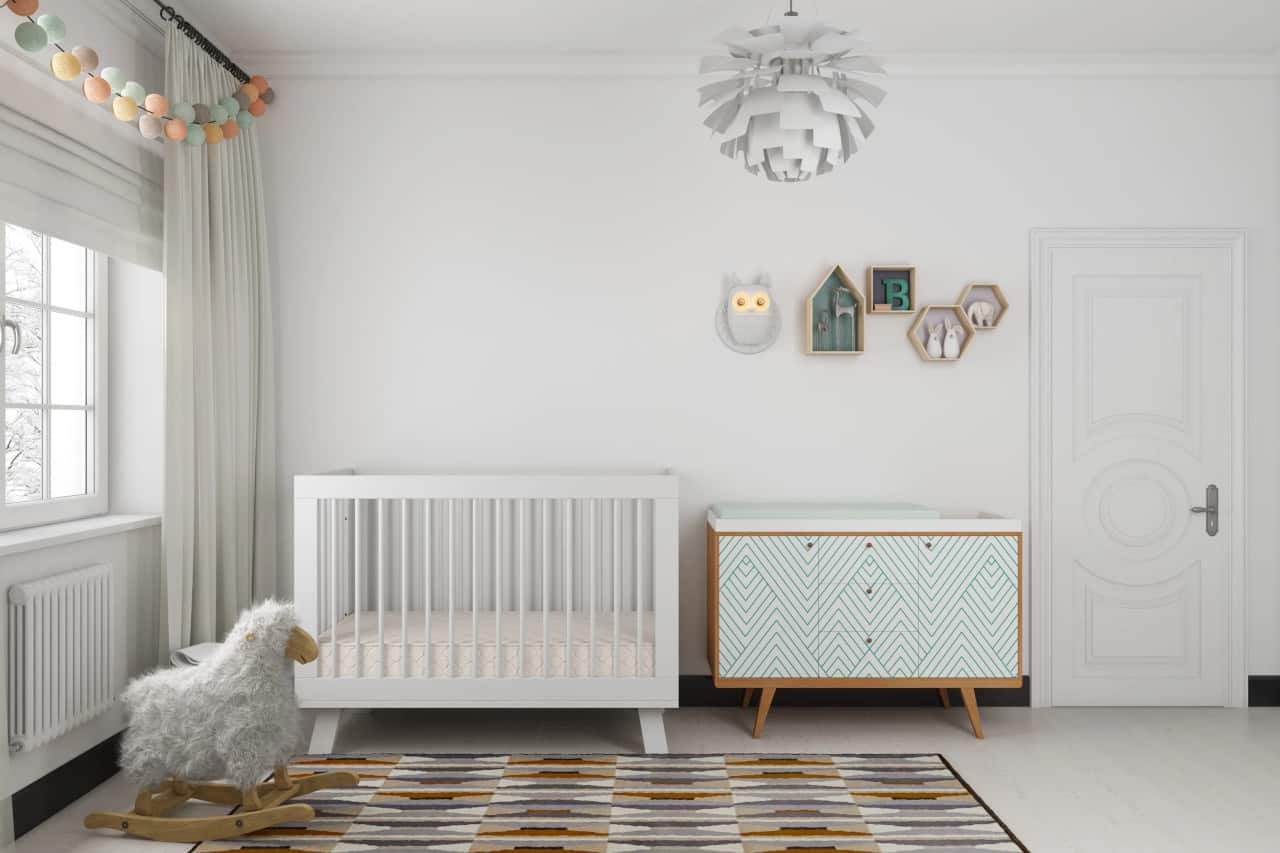
Price: $799 (Visit the site)
If an all-latex organic crib mattress is up your alley, Lifekind make one that is good but rather expensive. They also have a 280-coil innerspring mattress option that costs the same price ($799).
The mattresses are all made in the USA in a factory where no chemicals are ever used.
Let’s take a look at the two models:
Latex: This mattress is made from GOTS-certified latex, is completely metal-free. It’s covered in a double-stitched outer layer made from GOTS-certified organic cotton and wool. This model comes with a 20-year limited warranty.
Innerspring: Similar to the latex version, it’s a 280-coil innerspring mattress that has the same double-stitched outer layer. However, this model is not waterproof and requires the use of a waterproof protector pad. The innerspring model boasts an impressive 25-year limited warranty.
This brand is definitely expensive and I’m not sure that price is justified. If you’re looking for an all-latex mattress, there aren’t many great organic options out there, so this one might be worth considering.
But as far as the innerspring model, the similar offerings from companies like Naturepedic and their 252-coil count offerings come in at a little more than half the price of this one, or less. Hard to justify, especially when they don’t offer any returns if you’re not satisfied with the product.
Recommended: No
Savvy Rest
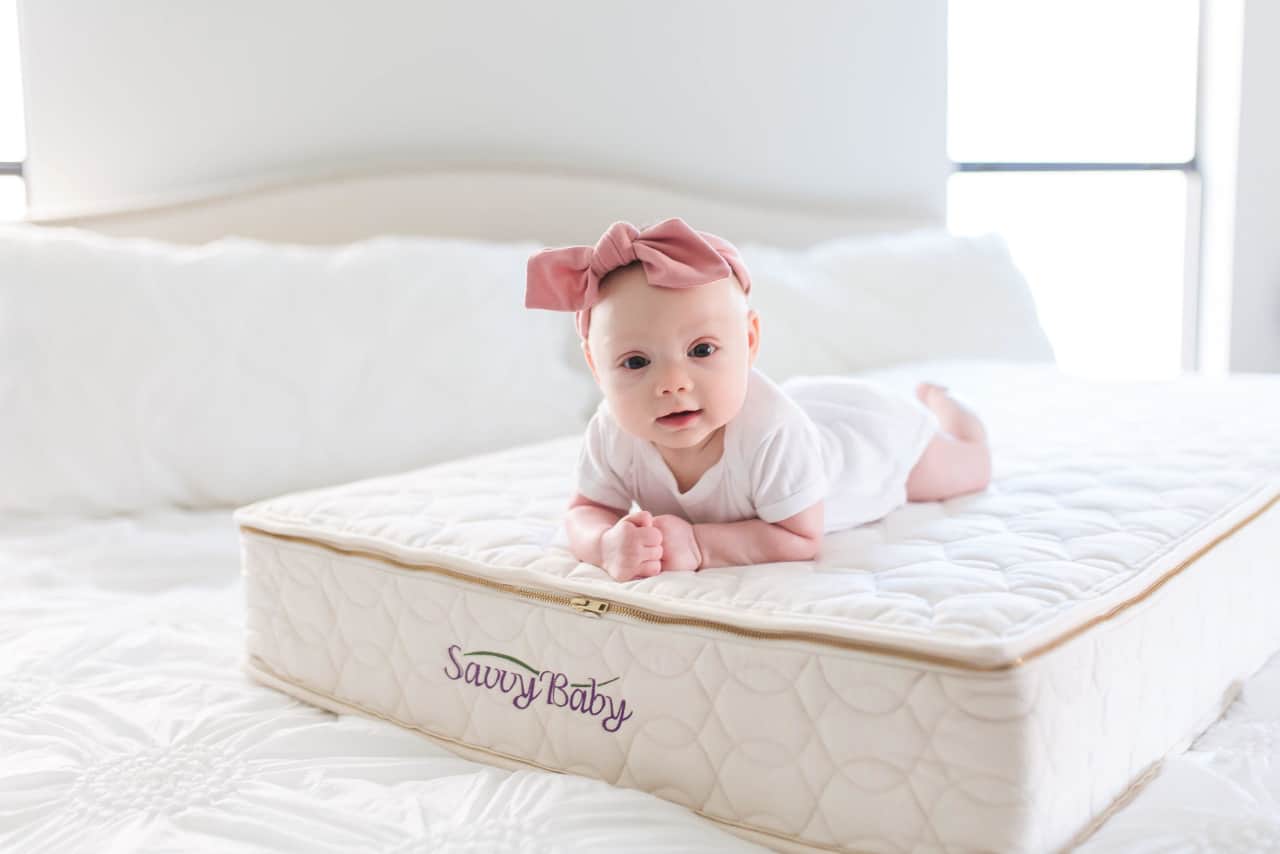
Price: $399 (Visit the site)
Another latex mattress but cheaper than the Lifekind mattress and also made in the USA.
It’s made from a big slap of GOLS-certified organic Dunlop latex and the outer layer is GOTS-certified organic wool and cotton to achieve the flame retardant status without the use of chemicals.
The outer layer can be removed with a zipper, so it can be removed for spot cleaning, but it’s not washing-machine friendly.
Like many other mattresses on our list, this one isn’t waterproof and does require the use of a waterproof protector pad.
A big issue we have with this mattress is that it’s not at all returnable. Unlike some of the other mattresses on our list, if you don’t like this one, tough luck. They do, however, offer a 20-year limited warranty.
All in all, if you’re on the market for an organic latex crib mattress at a decent price, this one will do the job nicely. But just beware that you’re stuck with it once you buy it.
Recommended: No
Popular mattresses to avoid.
There are some popular brands on the market that should actually be avoided. From toxic chemicals and flame retardants to noxious off-gassing, let’s take a look.
Newton – An extremely popular newer brand that has a line of mattresses and have made a huge push in internet marketing. Their mattresses are not organic, and are made from polymer (plastic).
They say they don’t use chemical flame retardants, but instead use phosphates (salt) as the flame retardant mechanism. We can’t speak as to whether this is safe or not, but since the mattress is made of plastics and not organic, we give it a hard pass.
Sealy Soybean Foam Core – Greenwashing at its finest. This company would love you to believe that their “soybean foam” core is super natural and healthy, but it’s in fact just polyurethane foam, and the cover is made from vinyl which is known to be toxic. They say they don’t use flame retardant chemicals, but according to research by Irina at I Read Labels For You, after contacting the company and doing the research, she couldn’t figure out how they’re meeting flame resistance guidelines without using chemicals. Avoid.
Moonlight Slumber – This mattress is promoted heavily by other blogs as the “best” crib mattress. However, it’s not organic and is made of synthetic materials (polyurethane foam), and at the price it sells for ($200) you can spend a little bit more and get a fully organic baby mattress.
Colgate Eco Classica III – Another mattress that is heavily promoted on “best of” lists, this one has some misleading marketing. The use the term “organic” all over the place, yet the core is made from polyurethane foam and only has an organic outer layer.
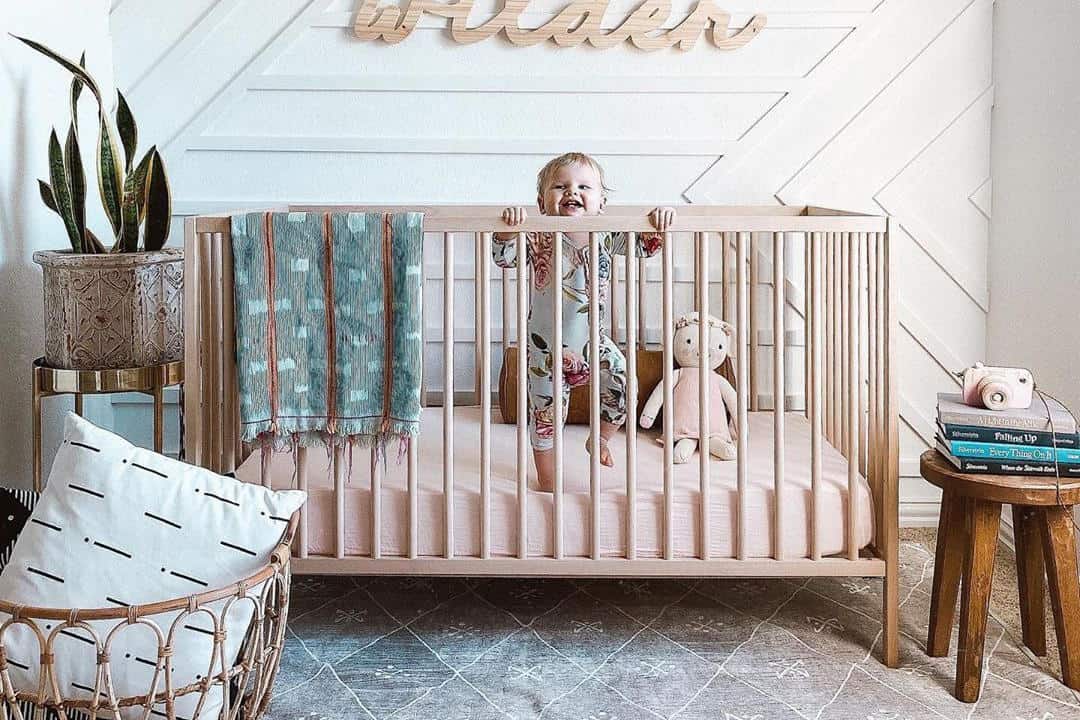
The Problem with Conventional Mattresses.
Most crib mattresses are made with polyurethane foam, which is a derivative of petroleum.
This is problematic for two main reasons:
- Polyurethane foam is very flammable. In order to meet federal flammability standards, manufacturers typically douse the mattresses in toxic flame retardant chemicals like formaldehyde or benzene.
- Because the mattress is doused in these chemicals, these chemicals along with the foam itself give off toxic gasses that your baby inhales.
Manufacturers are under no obligation to list the chemicals used in the mattress. And if they don’t list them, that’s a very bad sign.
Not only that, but many mattresses use vinyl/PVC to coat the mattress and make it waterproof. Vinyl is known to be one of the most toxic plastics there is, and can be leeched into baby’s skin.
A 2014 study looked at 20 different polyurethane-foam crib mattresses and came to these findings:
- The mattresses released 30 different types of volatile organic compounds (VOCs) along with other harmful chemicals.
- New mattresses were even worse than old mattresses, emitting 4x as many harmful VOCs compared to the old models.
- The expose to the infant was twice that of an adult standing in the middle of the room.
Crib mattress manufacturers simply don’t care about the safety of our children, period. This is why we need to do our own research and shop very carefully, choosing only the best organic crib mattresses from trusted companies who actually care.

Greenwashing Is Everywhere in the World of Mattresses.
Greenwashing is the marketing practice of misleading customers into thinking that their product is “green” or eco-friendly.
Since there are no regulations on using the term “organic” for mattresses (for the materials there are), many manufacturers are using only an organic outer layer on the mattresses and labeling the whole thing as “organic”.
Inside you might find polyurethane foam, toxic chemicals and flame retardants, etc.
Not only that, but sometimes manufacturers are sneaky and use a organic certification logos when only part of the materials used are certified. Or sometimes it’s only the factory that’s certified—not the product itself.
Also, beware of terms like “soybean foam”, “green foam”, etc. These are always greenwashing terms to hide the fact that they’re using polyurethane foam, a toxic plastic ingredient.
What in the World Do All of the Certifications Mean?
There are a confusing number of certifications you might find on a crib mattress.
Because the terms “organic”, “sustainable” and “natural” are non-regulated, it’s kind of a wild west scenario when it comes to these certifications. Not all of them are trustworthy; let’s take a look at them.
GOTS (Global Organic Textile Standard)

This is the only organic certification that matters on a crib mattress. GOTS is an international standard that covers the entire start to finish process, from spinning, knitting, weaving , dying and manufacturing.
It certifies that there are no harmful chemicals like formaldehyde or heavy metals used in the product, and it includes provisions that ban practices like child labor and genetic engineering.
GOLS (Global Organic Latex Standard)
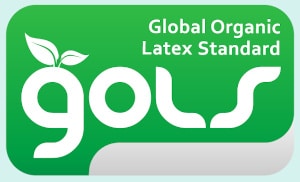
Similar to GOTS, this standard covers the latex in the mattress and insures that the rubber trees used for the latex are grown ethically, sustainably, and without pesticides, herbicides and other harmful chemicals.
MADE SAFE

This certification is one of the strictest on the market and verifies that the mattresses are made without known harmful carcinogens, behavioral, reproductive, and neuro toxins, hormone disruptors, heavy metals, pesticides, insecticides, flame retardants, toxic solvents, or harmful VOCs.
This is a great certification to have, but again, it doesn’t necessarily mean it’s organic. But this certification, along with GOTS and GOLS certifications, is a great trio.
USDA Organic

The USDA certifies agriculture products in a raw state. When cotton is harvested, it can still be USDA certified organic.
But once it’s processed and turned into material, it’s no longer considered an agriculture product, and the manufacturing processes used are beyond the scope of USDA certification.
Therefore, a USDA organic label alone doesn’t guarantee that there are no harmful chemicals in the mattress.
OEKO-Tex
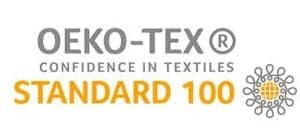
This certification tests for a long list of chemicals, pesticides and phthalates, including VOCs (volatile organic compounds, or gasses). OEKO-Tex certification is completely voluntary and must be updated every year. While this is a great certification to have, it does not mean that the product is necessarily organic.
Certipur-US

This standard certifies that there are no PBDE (polybrominated diphenyl ester) flame retardants, mercury, lead, formaldehyde, or ozone depleters.
However, you should know that this certification is actually a registered trademark of Alliance for Flexible Polyurethane Foam, Inc, a corporation whose board of directors consists entirely of members associated with the polyurethane foam industry.
This, in our opinion, makes this certification a bit sketchy. Could it be a marketing tool by the polyurethane industry to sell more mattresses?
While this isn’t really a bad certification for a crib mattress to have, it certainly isn’t good enough and it alone doesn’t mean that it’s organic.
GreenGuard

This certification evaluates mattresses for VOC emissions. To test the mattresses, they place them in a vacuum chamber and subject them to various testing. Another good certification but it’s not good enough on its own.
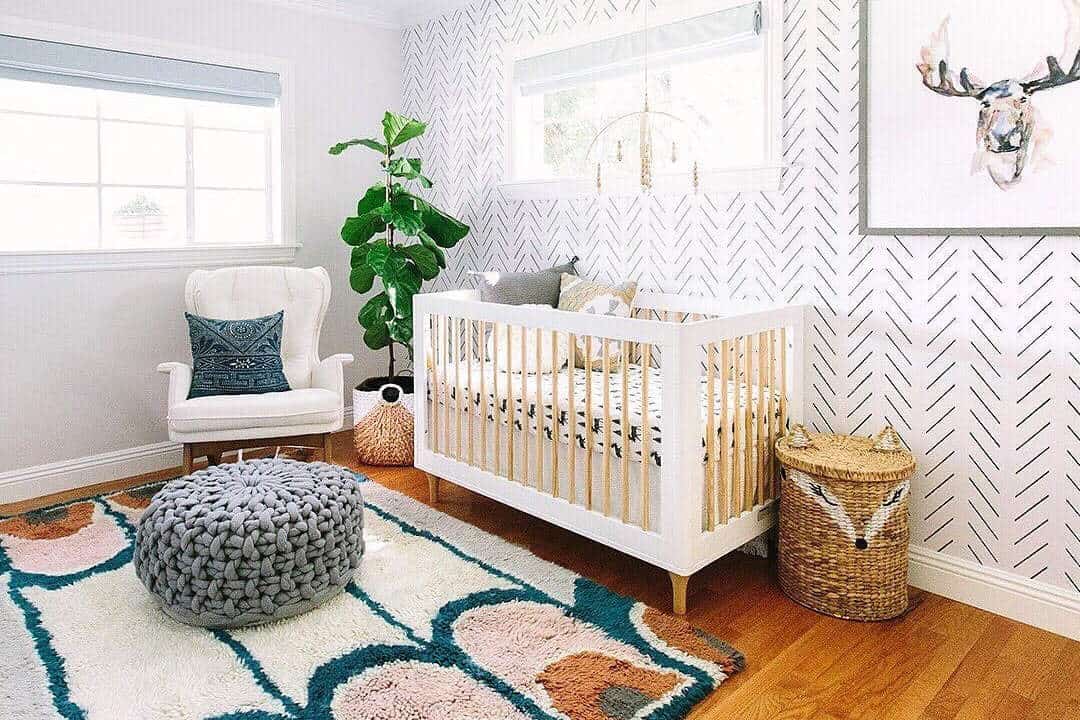
An Excellent Organic Crib Mattress Will Be:
Truly organic.
Unfortunately, since the term “organic” is unregulated for mattresses, so there’s nothing legally stopping a company from calling their mattress “organic when it’s really not.
Free of chemical flame retardants.
All mattresses sold in the US must pass federal flammability standards. Unfortunately, since polyurethane foam is so flammable, the easiest and cheapest way to achieve this is with the use of nasty chemical flame retardants.
It’s entirely possible to manufacture a mattress that meets these standards without the use of chemicals, for example by using materials that aren’t as flammable, such as wool.
There is no requirement for a company to list which chemicals they use in the mattress. But any good company will tell you if they use chemical flame retardants without having to ask them. If they don’t, I’d avoid that brand.
Not be made of polyurethane, soy and vegetable-based foam.
Polyurethane foam is a petroleum-derived foam that emits VOCs and is highly flammable and therefore is treated with toxic flame retardant chemicals.
Greenwashing is sometimes used here, where you’ll see that a mattress uses “soybean core foam” or similar. The fact is that these mattresses are simply polyurethane foam mixed with a small amount of soybean or other plant-based material as a marketing trick.
Not use vinyl/PCP for waterproofing.
It sounds great to have a waterproof mattress, right? No pee leaking straight into it, yay!
But in order to make the mattress waterproof, manufacturers often use a vinyl outer layer. Vinyl (also known as polyvinyl chloride or PVC), which is one of the most toxic plastics there is.
You should never buy a crib mattress that uses a vinyl outer layer. But it’s also crucial that you have a waterproof pad on top, because a wet mattress can result in mild, mildew, bacteria and fungus.
The best alternative to vinyl that manufacturers use is polyethylene, which is typically sourced from natural sources like sugarcane. While it’s still a plastic, companies like Naturepedic use food-grade polyethylene that should be safe to sleep on.
Made in the USA.
Some crib mattresses are made in China, which is concerning for a number of reasons. Not only are the laws and regulations more lax there, but you’ll have to worry about quality control issues, contamination with unknown chemicals and worse, etc. All of the mattresses we recommend are made in the USA.
Firm.
Although as an adult you might want to prioritize comfort over firmness, when it comes to buying a baby mattress, firmness is key for safety.
Good warranty and customer service.
Issues can arise with any mattress, and a company that stands by their product to help out with any potential issues is a great positive. A good, solid warranty is also a huge bonus: some companies have 20 to 25 year limited warranties, for example.
Why a Used Crib Mattress is a Bad Idea.
Hand-me-downs are great! But when it comes to baby crib mattresses, it’s actually a no-go.
While you might be okay if you know exactly what you’re looking for, some studies have linked the use of old crib mattresses with an increased risk of SIDS.
A study published in 2002 by the British Medical Journal concluded that there was a “…valid statistical associated between sudden infant death syndrome and the use of an infant mattress previously used by another child…” and I would therefore never recommend letting your baby sleep on a used crib mattress.
Other reasons not to purchase a used crib mattress:
- Third-hand smoke. This is the toxic chemicals that linger after a cigarette or cigar is extinguished. According to the government-funded tobacco-awareness website, Breathe Easy Maine, “Infants exposed to thirdhand smoke are more likely to die from Sudden Infant Death Syndrome (SIDS), and those exposed are at an increased risk for asthma.”
- They’re unsanitary. Crib mattresses are magnets for poop and pee, and you have no idea how well the previous owners took care of it. Moisture can lead to mold, bacteria and fungi growth inside of the mattress too. Pretty icky stuff, and you’d never know about it unless you cut the mattress in half.
- They can be full of dust mites (or even bed bugs). An improperly cleaned mattress can be a dust mite or bedbug gateway into your home.
- Crib mattresses don’t last forever. A used mattress may not have a lot of life left in it. If it’s starting to sag or lose its support, it might not be safe to use anymore. A sagging mattress is a definite SIDS risk.
- Safety standards have changed. While we’re all about buying an organic crib mattress here, older crib mattresses used flame retardants like PBDEs which are even worse than the ones used today.
It’s just not worth using a hand-me-down mattress. If you have an older mattress than you used for another child and you absolutely know that it was well taken care of and stored in a cool and dry place, then by all means use it.
Why Memory Foam Mattresses Are a Bad Idea.
First of all, let’s make a distinction between foam and memory foam.
Regular polyurethane (or foam) is a very common material used in the construction of mattresses and has been used for nearly a century.
However, recent advances in technology have given us materials like memory foam. Typically, memory foam is made of the same polyurethane but with added chemicals that increase its viscosity and density. It’s sometimes referred to as viscoelastic or low-resilience polyurethane foam (LRPu).
The end result is that memory foam will change shape and form to the head or body, which can be great for comfort for a fully grown adult like yourself. But there’s a BIG problem when it comes to the use of memory foam for infants.
In 2016, the AAP (American Academy of Pediatrics) put out a report on SIDS (Sudden Infant Death Syndrome) and concluded that a firm sleeping surface is key in reducing the risk of sleep-related infant deaths.
In this report, they state that they do not condone the use of memory foam mattresses because they can form a pocket or indentation that can lead to suffocation if the child rolls face-first into it.
Approximately 3500 infants die each year in the US alone due to SIDS and other sleep-related deaths so this is no joke. Please don’t use a memory foam mattress (or topper, for that matter)!
Summing it up.
Having a good, safe, organic baby crib mattress is an excellent way to start creating a safe, non-toxic home. While there’s a lot of misleading information in the world of mattresses, from both manufacturers and bloggers, it’s not actually that hard to find a mattress that’s safe and reliable.
Quick recommendation: The breathable lightweight 2-stage Naturepedic mattress is our recommended organic crib mattress. It’s breathable (so it’s safer), lightweight (so it’s easy to change sheets) and dual-sided (so they can sleep on it as a toddler, too.)
All around a great organic crib mattress. (click here to buy and use code BETTERGOODS15 for 15% off and free shipping!)
Photo credit: @projectnursery


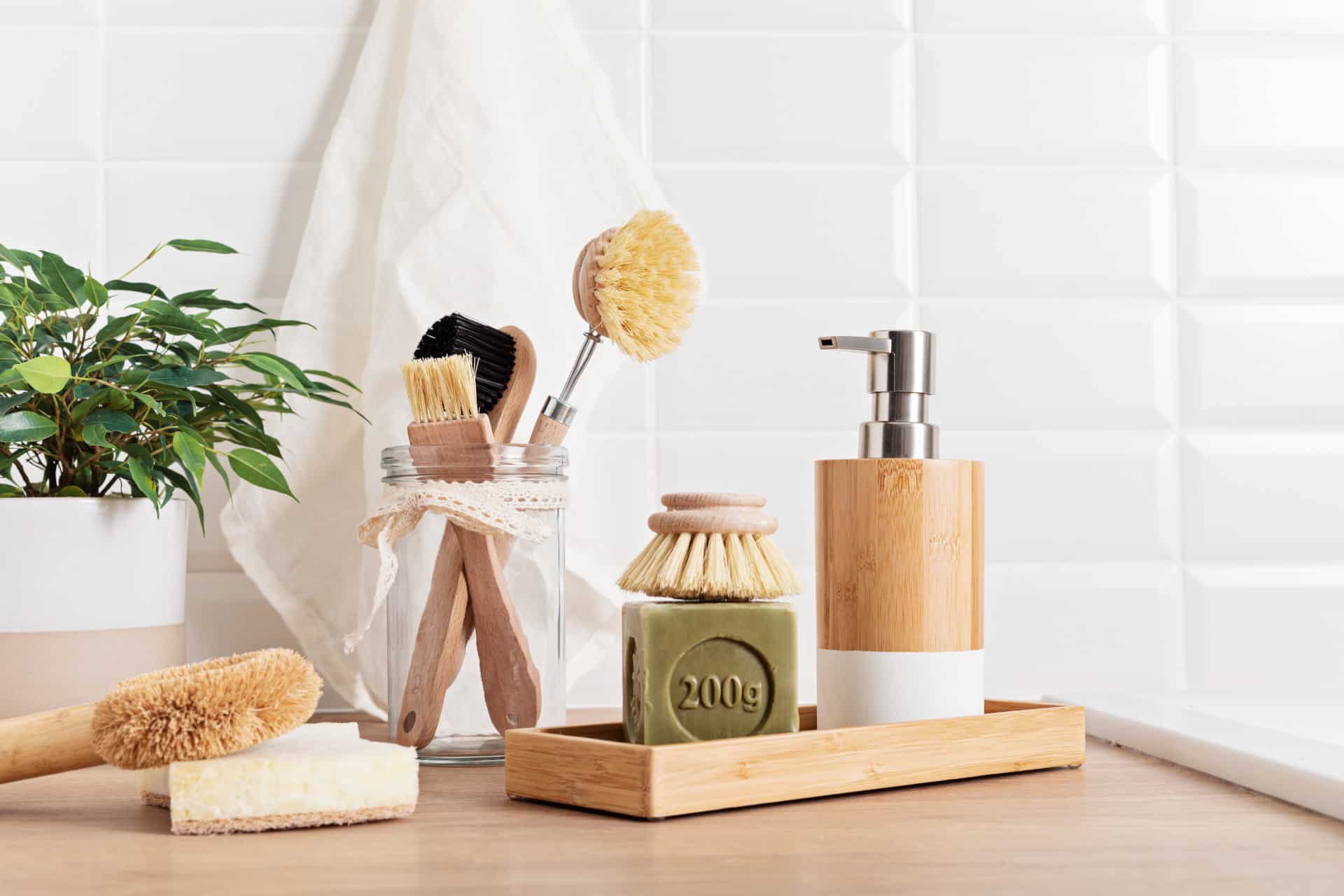

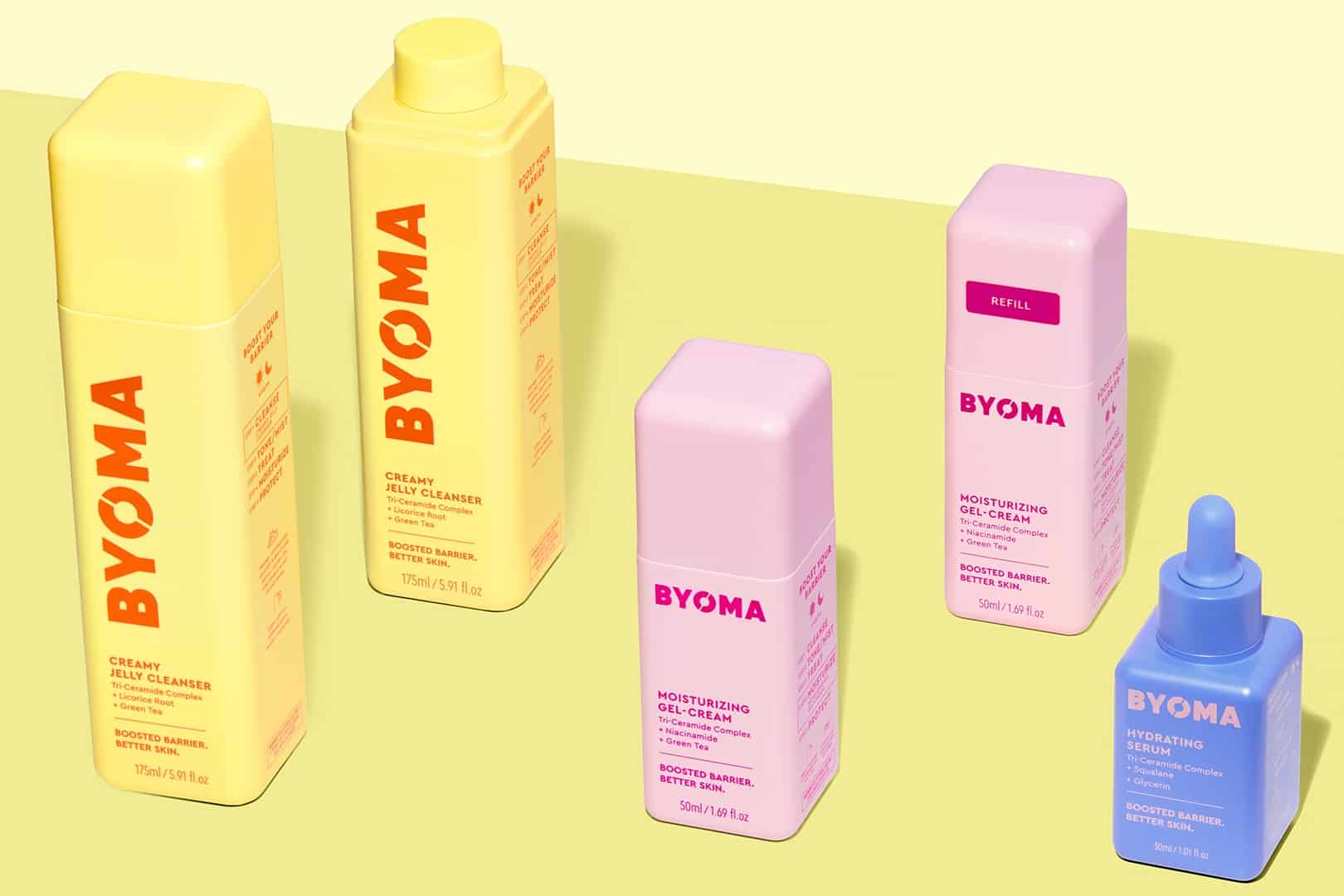
Nancy Jeffrey
A very educational mattress review. As a pediatrician, I was very happy to see the warning about memory foam mattresses. That warning needs to be more widespread.